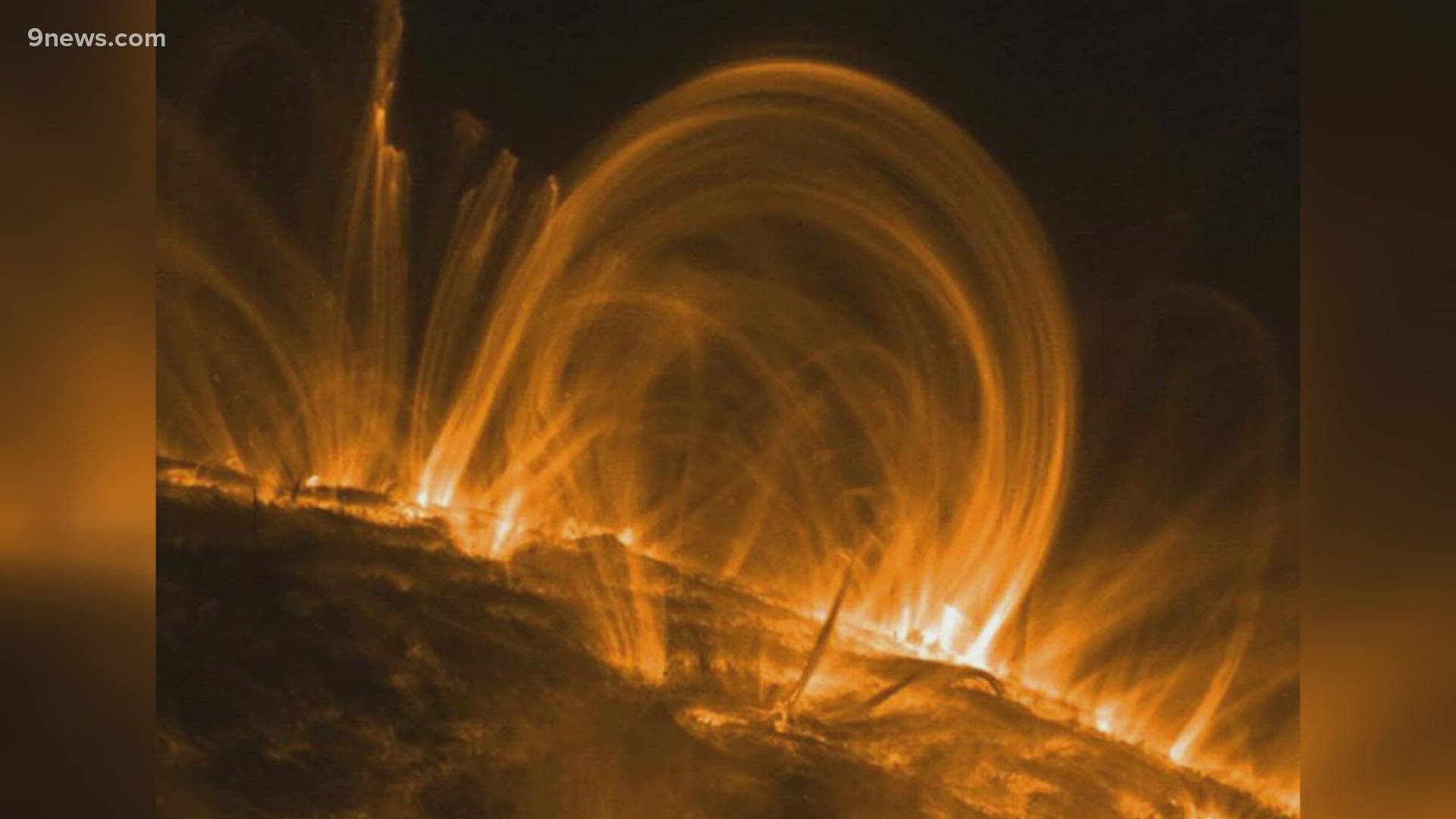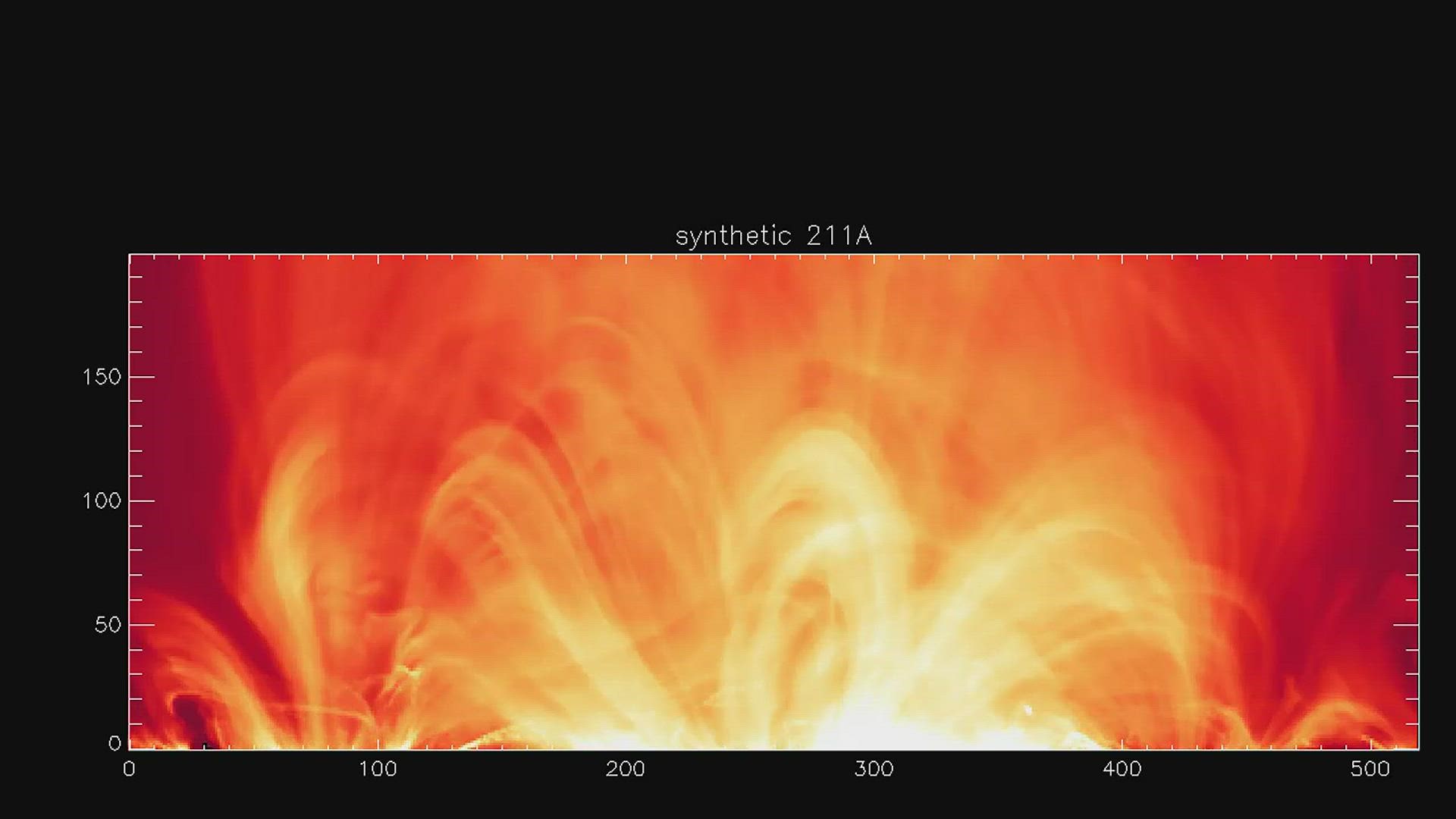BOULDER, Colo. — Massive arches of plasma in the sun’s atmosphere, called coronal loops, have long been used by scientists to measure the temperature and density of our star.
These features have become iconic images used to symbolize the structure of the sun's outer layer. But new research from the National Center for Atmospheric Research (NCAR) in Boulder shows those loops might just be optic illusions.
“That is the most impactful conclusion from this paper, that we don’t know what it is that we are looking at,” solar physicist Anna Malanushenko said.
She and her team of scientists used a high-resolution radiative magnetohydrodynamic model to take a closer look at the sun’s corona slice by slice.
The simulation, which was created a few years ago by NCAR scientists in conjunction with Lockheed Martin, provided Malanushenko with the most detail of the sun ever seen.
“My mind exploded. My mind completely exploded," she said. "What I saw inside the simulation was nothing like I expected to see.”
> Watch: Computer model showing folds in the coronal veil
What she saw, instead of individual loops, was more of a blend of plasma with different layers and densities, which comes across as different shades of light in ultraviolet imaging.
She calls this the coronal veil. And folds in this veil could be confused for individual loops.
She used the curtain in her kitchen as an example. The darker folds in the curtain are more noticeable than the transparent part of the curtain, but the folds are still part of the curtain.


The study shows that some coronal loops might just be folds in the coronal veil.
Malanushenko said this discovery may change the way we measure our sun, which is important to all of us, because all life on Earth depends on its behavior.
“Whenever something like this happens, when new methods emerge, we learn something new," she said. "And it looks like there is a whole lot that we are yet to learn about our star.”
The study does not say that coronal loops don’t exist. It just shows that if they are there, they can’t be distinguished from folds in the coronal veil -- at least not with current scientific methods.
SUGGESTED VIDEOS: Science & Weather


